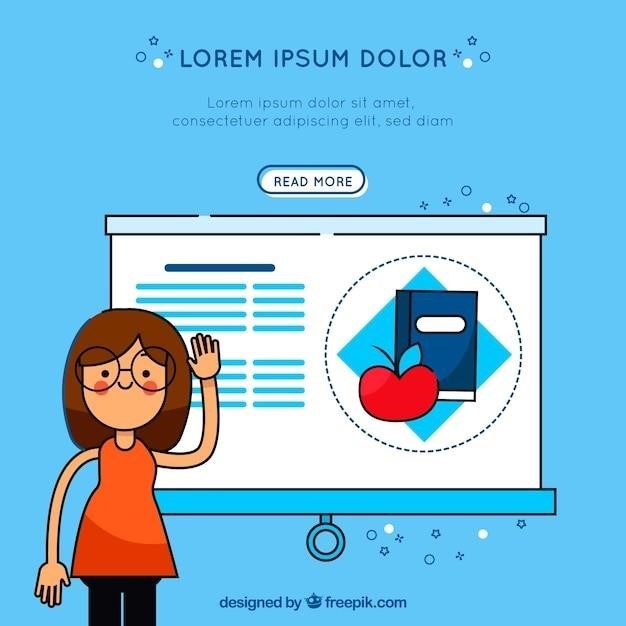bowling ball weight guide
Bowling Ball Weight Guide⁚ Finding the Perfect Fit
Selecting the right bowling ball weight is crucial for optimal performance and injury prevention․ This guide helps you find the perfect fit‚ considering factors like your strength‚ bowling style‚ and the ball’s material․ Learn to avoid common mistakes and improve your game by choosing the ideal weight․
Understanding Bowling Ball Weights
Bowling ball weights are typically expressed in pounds (lbs) and range from 6 to 16 pounds․ The weight isn’t solely about the ball’s mass; it’s about how that mass feels in your hand and how easily you can control its trajectory down the lane․ A heavier ball possesses greater potential energy‚ translating to a potentially more powerful shot‚ but excessive weight can lead to fatigue‚ reduced accuracy‚ and even injury․ Conversely‚ a lighter ball is easier to maneuver‚ allowing for greater control and reduced strain‚ but it might lack the power needed for consistent pin action․ The “perfect” weight varies significantly from bowler to bowler‚ influenced by individual strength‚ physical capabilities‚ and bowling style․ Therefore‚ experimentation and professional guidance are often necessary to determine the optimal weight for each individual bowler․
Understanding the concept of “effective weight” is vital․ This refers to how the weight of the ball feels to the bowler‚ taking into account factors beyond the numerical weight․ For instance‚ a bowler might find a 14-pound ball feels heavier than it actually is due to their grip‚ wrist action‚ and overall bowling technique․ Similarly‚ a seemingly lighter ball can feel heavier if the bowler uses a grip that restricts their arm movement․ This underscores the importance of personal experimentation and professional fitting to pinpoint the most comfortable and effective ball weight․
Factors Affecting Ball Weight Selection
Several key factors influence the selection of an appropriate bowling ball weight․ Firstly‚ the bowler’s physical strength and stamina play a crucial role․ A bowler with greater upper body strength can comfortably handle a heavier ball‚ generating more power and potentially knocking down more pins․ Conversely‚ a bowler with less strength might find a lighter ball more manageable‚ preventing fatigue and improving accuracy․ Secondly‚ the individual’s bowling style significantly impacts weight choice․ Bowlers with a smoother‚ more controlled delivery might prefer a slightly heavier ball for added power․ Those with a more aggressive‚ faster style might opt for a lighter ball to maintain control and prevent injury․ Thirdly‚ the type of bowling lane surface and the prevailing bowling conditions influence the ideal weight․ Oily lanes might necessitate a heavier ball to cut through the oil‚ while drier lanes might permit a lighter ball for greater control and accuracy․
Beyond these primary factors‚ personal preferences and comfort levels are equally important considerations․ A bowler might find a specific weight more comfortable and easier to control‚ even if it isn’t the heaviest they can physically handle․ Finally‚ the ball’s material and core design also subtly impact the perceived weight and its behavior on the lane․ A ball with a dense core might feel heavier than a comparable ball with a lighter core‚ even if their stated weights are identical․ Therefore‚ a holistic assessment of these diverse factors is needed to determine the optimal bowling ball weight for each individual bowler․
Weight Classes and Their Implications
Bowling balls are typically categorized into weight classes‚ each having distinct implications for performance and bowler suitability․ These classes are usually expressed in pounds‚ ranging from lightweight options suitable for children and beginners to heavier balls preferred by experienced bowlers with greater strength․ Lighter weight classes‚ for instance‚ those under 12 pounds‚ are often chosen by individuals with less upper-body strength or those prioritizing control over raw power․ These lighter balls are easier to handle and manipulate‚ leading to better accuracy‚ especially for those with less experience․ Conversely‚ heavier weight classes‚ usually above 15 pounds‚ are favored by experienced bowlers who prioritize maximizing pin-carrying power and generating more hook potential․ However‚ using excessively heavy balls can lead to fatigue‚ reduced accuracy‚ and potential injuries․
The choice of weight class significantly impacts the ball’s trajectory and hook potential․ Heavier balls tend to create a stronger hook due to their increased momentum and inertia‚ providing a more aggressive trajectory․ Lighter balls‚ on the other hand‚ might require more revolutions to achieve a similar hook‚ resulting in a straighter path․ Therefore‚ selecting an appropriate weight class is crucial for achieving desired ball motion and maximizing pin action․ The implications extend beyond the physical aspects of the throw‚ also affecting the bowler’s stamina and overall bowling strategy․ Ultimately‚ finding the right weight class involves balancing power‚ control‚ and personal comfort to optimize one’s bowling game․
Determining Your Ideal Bowling Ball Weight
Finding your ideal bowling ball weight is a crucial step in enhancing your game and preventing injuries․ Several factors must be considered to determine the perfect weight for your individual capabilities and bowling style․ Firstly‚ assess your physical strength and stamina․ Begin by selecting a ball that feels comfortable and manageable in your hand without causing strain or fatigue․ Experimenting with different weights is important to find the balance between control and power․ A weight that’s too light might lack the necessary power to knock down pins effectively‚ while one that’s excessively heavy can lead to discomfort‚ poor accuracy‚ and potential injuries․ This is particularly important for bowlers who intend to use the ball for extended periods․
Consider your bowling style as another key factor․ Bowlers who utilize a slower‚ more controlled approach may find lighter balls more suitable for precision and accuracy․ Conversely‚ bowlers who generate significant speed and power might benefit from heavier balls to maximize pin carry․ Remember that your comfort level is paramount․ The best weight is one that allows you to consistently deliver the ball with proper technique and without undue strain․ Don’t hesitate to seek advice from experienced bowlers or professionals at your local bowling alley; they can offer personalized guidance based on your physical capabilities and bowling style․
The Role of Bowling Ball Material
The material of your bowling ball significantly impacts its weight and overall performance․ Different materials possess varying densities‚ influencing the ball’s weight-to-size ratio․ Understanding these differences is key to choosing a ball that complements your style and strength․ For instance‚ resin bowling balls are generally heavier than reactive resin balls of the same size‚ offering more power but potentially less control for some bowlers․ Reactive resin balls‚ while often lighter‚ provide a higher level of hook potential‚ making them popular choices among players who prioritize curve and pin action․ The core of the ball also plays a role‚ as different core designs can influence the weight distribution and its effect on the ball’s overall trajectory․
Consider the lane conditions when assessing material; Oily lanes might favor balls with a strong hook potential‚ potentially requiring a lighter weight to maintain control․ Conversely‚ drier lanes may allow for heavier balls to generate more power․ The surface finish of the ball also interacts with the lane’s surface‚ affecting the amount of friction and ultimately the ball’s reaction․ A smoother finish generally results in less friction and a straighter trajectory‚ while a rougher finish increases friction‚ leading to more hook․ Experimenting with different materials and observing their performance across varying lane conditions can help you determine the ideal material for your individual needs and preferences․ Remember to consult with bowling professionals for personalized recommendations tailored to your specific skill level and goals․
Impact of Bowling Style on Weight Choice
Your bowling style is a critical factor in determining the appropriate ball weight․ Different styles demand different levels of power‚ control‚ and accuracy‚ all influenced by the weight of the ball․ For instance‚ a power bowler aiming for strong‚ straight shots might prefer a heavier ball to generate maximum force and pin action; This style often involves a forceful swing and release‚ making heavier balls manageable for generating power․ Conversely‚ a bowler with a more finesse-oriented approach‚ emphasizing accuracy and control over brute force‚ might find a lighter ball more suitable․ A lighter ball allows for greater precision and control‚ especially beneficial when aiming for specific pin combinations․ The speed of your delivery also plays a role; faster bowlers might benefit from a slightly heavier ball to maintain momentum‚ while slower bowlers may find lighter balls easier to control and generate sufficient speed․
The type of hook or curve you employ further influences your weight selection․ Bowlers who rely heavily on hook shots‚ requiring precise spin and trajectory adjustments‚ often prefer lighter balls to better manage the spin and maintain control․ Conversely‚ those using straighter shots might opt for heavier balls to maximize power and pin impact․ Ultimately‚ the ideal weight is a personalized choice‚ a balance between power‚ control‚ and the specific demands of your individual style․ Experimenting with different weights‚ paying close attention to your comfort level‚ accuracy‚ and pin-clearing effectiveness‚ is crucial for finding the optimal weight for your unique bowling style․
Common Mistakes in Weight Selection
A frequent error is selecting a ball based solely on what others use‚ neglecting personal physical capabilities․ Ignoring your own strength and stamina leads to fatigue and inconsistent performance․ Another mistake is overestimating your strength; choosing a ball too heavy compromises your accuracy and control‚ resulting in erratic shots and lower scores․ Underestimating your strength is equally problematic; a ball too light won’t generate enough power to knock down pins effectively‚ impacting your overall game․ Many bowlers fail to consider their bowling style; a heavy ball might suit a powerful thrower‚ but it could hinder a bowler aiming for finesse and accuracy․
Furthermore‚ neglecting the impact of the ball’s material is a common oversight․ Different materials affect the ball’s grip‚ reaction‚ and overall feel․ Ignoring this can lead to a mismatch between the ball’s characteristics and your bowling technique․ Finally‚ a significant error is failing to test various weights before committing to a purchase․ This crucial step allows for a personalized assessment‚ ensuring the chosen weight complements your style and physical capabilities․ Avoid rushing the decision; take your time to experiment and find the optimal weight to maximize your bowling potential․
Tips for Choosing the Right Weight
Start by assessing your physical capabilities․ Honestly evaluate your strength and stamina; selecting a weight you can comfortably handle for multiple frames is key․ Don’t be swayed by others’ choices; what works for them might not be ideal for you․ Consider your bowling style․ A powerful thrower might handle a heavier ball‚ while a bowler focusing on accuracy might prefer a lighter one․ Experiment with different weights at a bowling alley․ Most alleys offer a variety of house balls‚ allowing you to test different weights before investing in your own․ Pay attention to your comfort level; a ball that feels too heavy will lead to fatigue and inconsistent throws․
Gradually increase the weight if needed‚ but prioritize comfort and control over sheer weight․ Don’t jump to the heaviest ball available․ Remember‚ consistent accuracy trumps raw power․ If you’re unsure‚ seek advice from experienced bowlers or bowling professionals․ They can offer personalized guidance based on your physical attributes and bowling style․ Consider the ball’s material; some materials offer better grip or reaction‚ influencing the weight you’ll find comfortable and effective․ Ultimately‚ the perfect weight is the one that allows you to consistently deliver accurate and powerful shots without undue strain․
Testing Different Weights
The best way to determine your ideal bowling ball weight is through hands-on testing․ Begin by using house balls of varying weights at your local bowling alley․ Start with a weight you believe you can comfortably manage for several consecutive throws․ Don’t rush the process; take your time to get a feel for each weight․ Focus on your comfort level and ability to consistently deliver accurate throws․ After a few frames with one weight‚ switch to a slightly heavier or lighter ball to compare․ Note any differences in your accuracy‚ power‚ and overall comfort․ Pay attention to any fatigue or strain you experience․ If you feel your arm tiring quickly or your throws becoming less accurate‚ it’s likely the ball is too heavy․
Conversely‚ if you feel you lack power or control‚ the ball might be too light․ Keep a record of your scores and your feelings about each weight․ This will help you objectively analyze your performance with different weights․ Consider recording a video of your throws with each ball to review your form and identify potential issues related to weight selection․ Remember‚ the goal is to find a weight that allows for consistent accuracy and power without causing fatigue or discomfort․ This process of experimentation will help you make an informed decision about your ideal bowling ball weight․
Adjusting to a New Bowling Ball Weight
Switching to a new bowling ball weight‚ whether heavier or lighter‚ requires a period of adjustment․ Initially‚ you might experience some discomfort or a decrease in accuracy․ Don’t be discouraged; this is perfectly normal․ Start by practicing with the new ball in a relaxed setting‚ focusing on your form and consistency rather than your score․ Gradually increase the number of frames you bowl with the new weight․ Pay close attention to your body’s feedback; if you experience any pain or unusual strain‚ stop immediately and reassess․ Consider adjusting your grip or release slightly to compensate for the change in weight․ A professional bowling coach can provide valuable guidance on adapting your technique to the new ball․ They can help you identify and correct any flaws in your form that might be exacerbated by the weight change․
Remember‚ consistency is key․ Aim for smooth‚ controlled throws rather than forceful ones․ As you become more comfortable with the new weight‚ you’ll naturally find your rhythm and accuracy will improve․ Regular practice is crucial for developing muscle memory and building the strength and coordination needed to effectively use the new bowling ball․ Be patient with yourself‚ and don’t expect to become proficient overnight․ With persistent practice and attention to detail‚ you’ll successfully adapt to your new bowling ball weight and experience improved performance on the lanes․





